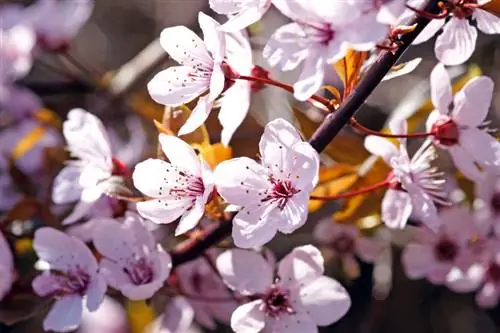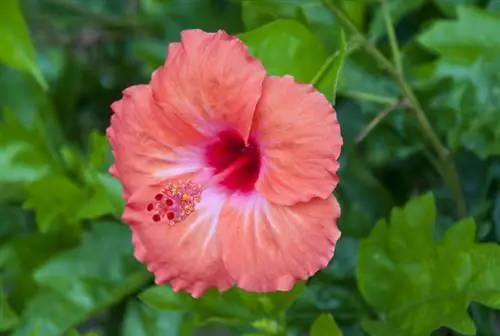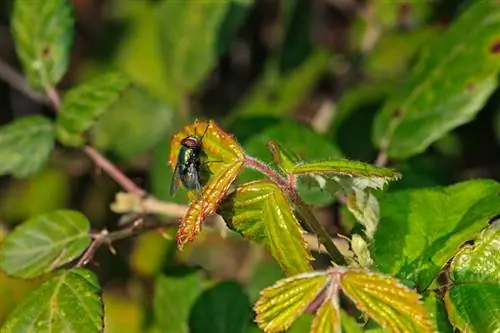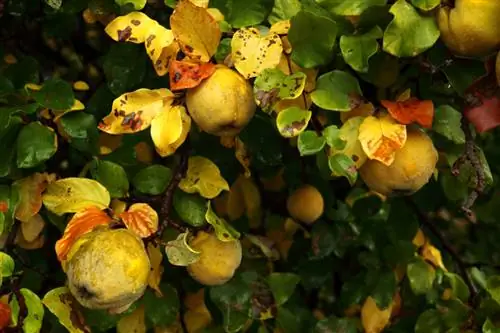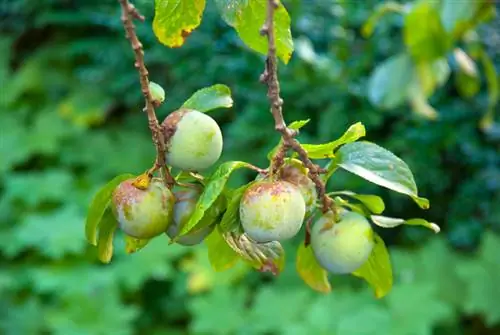- Author admin [email protected].
- Public 2023-12-16 16:46.
- Last modified 2025-01-23 11:20.
Unfavorable care conditions quickly lead to blood plum disease. Various diseases and pest infestations often occur at the same time. Early detection can provide species-appropriate remedies. Natural means play an important role in the sustainable preservation of the cherry plum.

What diseases occur in blood plums and how can they be prevented?
Blood plums often suffer from fool's disease, pocket disease, shotgun disease, monilia (fruit rot and tip drought) and lice infestation. Preventative measures include a suitable location, proper fertilization and the use of natural remedies such as horsetail extract.
Fool's and pocket disease
This fungal infection shows itself through clear patterns:
- Leaves: dry up shortly after sprouting, fall from the tree
- Shoots: thickened, deformed young shoots
In this case, no pesticides are permitted.
Shotgun disease
This fungal infection can be recognized at first glance:
Leaves: with small brown spots, later these can be seen as holes
The spots indicate the death of individual pieces of tissue. These fall out of the leaf. Botanists refer to these holes as shotgun blasts. Cut affected leaves from the tree immediately. Dropped specimens are picked up. Then make sure to dispose of it separately, away from the compost. Residual waste is an alternative. This way you prevent the fungal infection from spreading.
The specialist store also offers copper preparations (€23.00 on Amazon) or fungicides. You use these at the start of the infestation. Next spring, spray young leaf shoots with these products.
Monilia: fruit rot and tip drought
These diseases are caused by two similar species of fungi. Monilia occurs in various forms, primarily in years with a lot of rain. Many fungal spores form long before flowering. These are distributed over the entire tree with the help of the wind.
Peak drought:
Dry shoot tips are a distinctive feature of this infestation. If this is not treated, the fungus will spread more with each new season. You should definitely remove dead branches and fruit mummies and destroy them far from the garden. Make sure that you cut up to 20 centimeters into the well-preserved wood.
Fruit rot
Recognizable by ring-shaped, brown spots. Remove infected fruit from the tree immediately. Wasp traps are also useful. The animals can no longer eat the fruit. There is less surface area for the monilia fungus to attack. Alternatively, you can spray with horsetail extract in the spring for prevention.
There are also pesticides against Monilia. Make sure that only approved variants are used.
Lice
If the infestation is limited, no measures are necessary. If there is a stubborn pest infestation, the use of Asian lady beetles is recommended. These like to eat small lice.
Tips & Tricks
Inform yourself about special care instructions when purchasing a new tree. The right location and appropriate fertilization are important factors in disease prevention.

